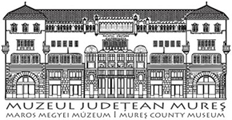Marisia - Maros Megyei Múzeum Évkönyve 27/3. (2003)
Ördög Enikő-Melinda: Arta populară românească, maghiară şi săsească în ceremonialul nunţii
172 ÖRDÖG ENIKŐ-MELINDA GLOSAR Fersing = rochie färä máneci Köntös = fustä cu cäma§ä Kötény = §ort Pendely = furou Vőfély = chemätor Kirschen = cojocul pelerinä Wasken = pieptar färä máneci Näsäloaice = neveste Orätenii = päsäri Romanian, Hungarian and German Folk Art in Wedding Ceremonies ( Summary) In present day Transylvania several traditional folk elements has been preserved in daily life customs. One of these is the wedding ceremony tradition. An important part of this is the inheritance of the bride, that she brings into the marriage. In the past this was composed as follows folk customs, bedlinen, pillows, couts, pottery, broderies, homespan, towels, agricultural tools, etc. All though the objects of yhe different ethnic groups have preserved its specific caracter one would easily recognise several common patterns of these. The living together of the different nationalities inevitably created interactions in the folk art elements. They have borrowed from each other specific ethnographical patterns, so one could find German and Roamnian folk elements in the Hungarian one and vice versa. The folk art elements are present mostly through the coloration, motifs and forms. In these way several new elements, forms and the new process of development of the artistic creation appeared in the respective region. These borrowing process is not mechanical one but it is a creative integration of the new elements in which every nation is bringing his on own apport. On of the best way to identify these elements, present as a result of the living together is the analysis of the brides inharitance.
